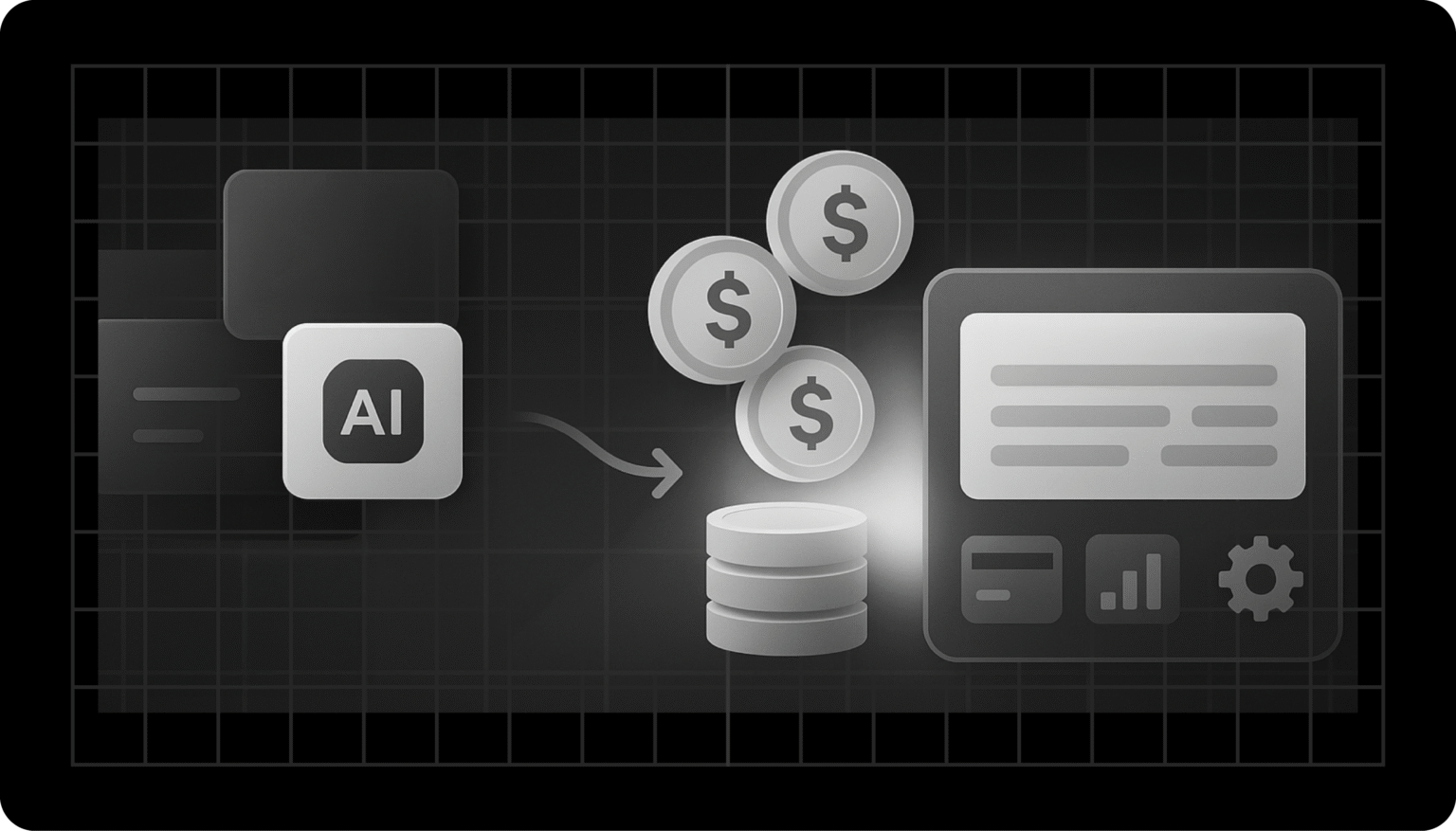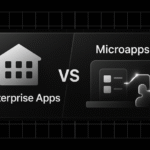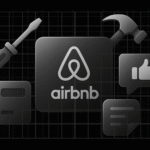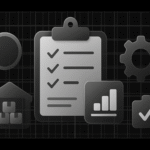If you’re a developer, you’ve likely asked yourself: “How can I earn steady income from my apps without constant maintenance?”
The good news is that building AI-powered microapps opens up a realistic path to passive income for developers.
Many developers struggle to turn their AI apps into sustainable revenue streams. Choosing the right monetization model—whether usage-based, subscription, or one-time fees—can be confusing.
Without a clear plan, even a brilliant app can fail to generate consistent passive income for creators.
The good news is that with the right monetization strategy, you can generate revenue daily, scale your apps to unlimited users, and focus on your next big project—all without sacrificing coding time or personal priorities.
Here’s a proven, realistic system to monetize your AI apps using the Microapp platform, no hype, just actionable steps.
Why AI Apps Are Perfect For a Passive Income For Developers
AI apps are ideal for passive revenue because they are scalable, low-cost, and in high demand:
- Global digital product spending reached $135 billion in 2024—a 70% jump over two years.
- Nearly 50% of indie developers report earning a reliable income from digital products.
With the right strategy, even small AI microapps can evolve into substantial passive income streams for developers.
AI microapps are ideal for developers because:
- Minimal overhead: Hosting costs are low, and updates are minimal.
- Scalability: Serve unlimited users with little extra effort.
- Growing demand: Digital and AI products are in high demand.
💡 Tip: Start with a small niche for faster traction and higher conversion. Check out our blueprint to market your AI app.
💬 How much can I realistically earn with an AI microapp? Earnings vary—microapps can generate $50–$1K/month initially, scaling as your user base grows.
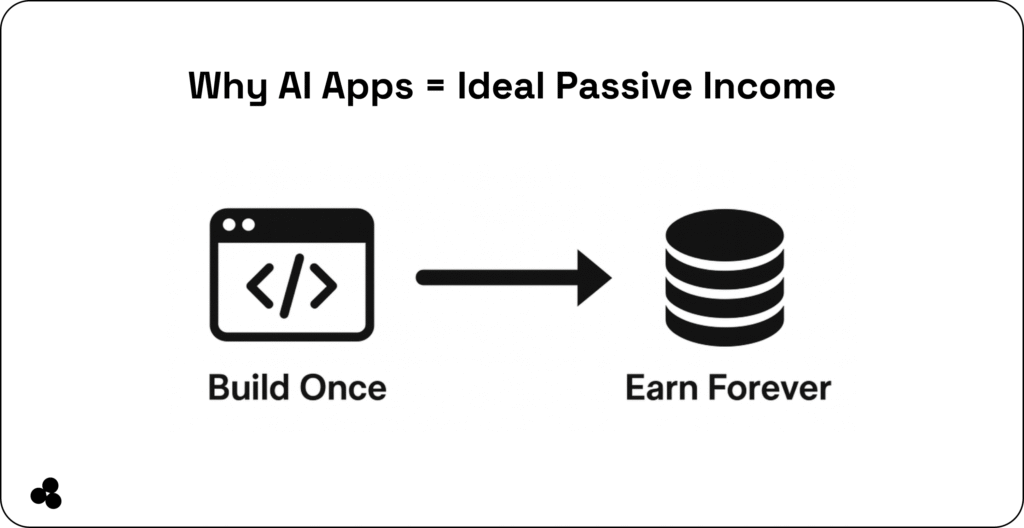
Choosing Monetization Strategies for Passive Income for Developers
There are three main ways to monetize AI apps. The best approach depends on your app’s type, audience, and engagement frequency:
1. Usage-Based (Metered Billing)
Charge users based on actual consumption—think electricity: they pay for what they use.
How it works:
- Assign value units (credits, tokens, API calls) to actions.
- Users purchase credit packs (e.g., 100 tokens for $5).
- Each use subtracts from their balance.
Example: An AI resume optimizer costs $0.03 per rewrite. Charge 1 token per optimization, 100 tokens = $5. Power users may spend $10–20/month, while your costs remain low.
📣 Tip: Usage-based models scale automatically with user activity. Worthy Read: How to Market Your AI Tool.
💬 Do I need coding experience to make money from AI apps? Not necessarily. No-code platforms like Microapp allow you to build and monetize apps without extensive coding.
2. Subscriptions & Bundles Access
Offer ongoing value like content generation, analytics, or productivity tools.
Benefits:
- Predictable Monthly Recurring Revenue (MRR).
- Higher lifetime value per user.
- Bundled AI features increase premium appeal.
Example: A productivity dashboard offers basic free features. The $12/month Pro plan includes AI suggestions, GPT summaries, and voice notes.
📣 Tip: Start small and expand features in your Pro plan based on user feedback. Worthy Read: How do You Price Your App?
One-Time Fees & Lifetime Access
Perfect for lightweight or niche apps. Users pay once for lifetime access.
Benefits:
- Quick revenue with minimal setup.
- No churn worries.
- Ideal for prompt libraries, templates, or datasets.
Example: Sell a 50-prompt ChatGPT pack for $29. 200 buyers = $5,800 in passive income from a single weekend.
📣 Tip: Bundle high-value resources into one purchase to simplify sales. This model also aligns with no-code passive income ideas: you can pre-build assets and sell them repeatedly with no need for changes.
💬 Which monetization model is best for beginners? One-time fees are the simplest. Subscriptions and usage-based models can be added as your app matures.
Quick Comparison: What Should You Choose?
| Model | Best For | Pros | Watch Out For |
| Usage-Based | Variable, compute-heavy features | Scalable, fair, dynamic pricing | Needs usage tracking and credit logic |
| Subscription | Continuous or daily-use AI tools | Predictable income, higher LTV | Must deliver ongoing value |
| One-Time Fee | Fixed assets or low-complexity apps | Fast cash, easy setup | Limited future revenue |
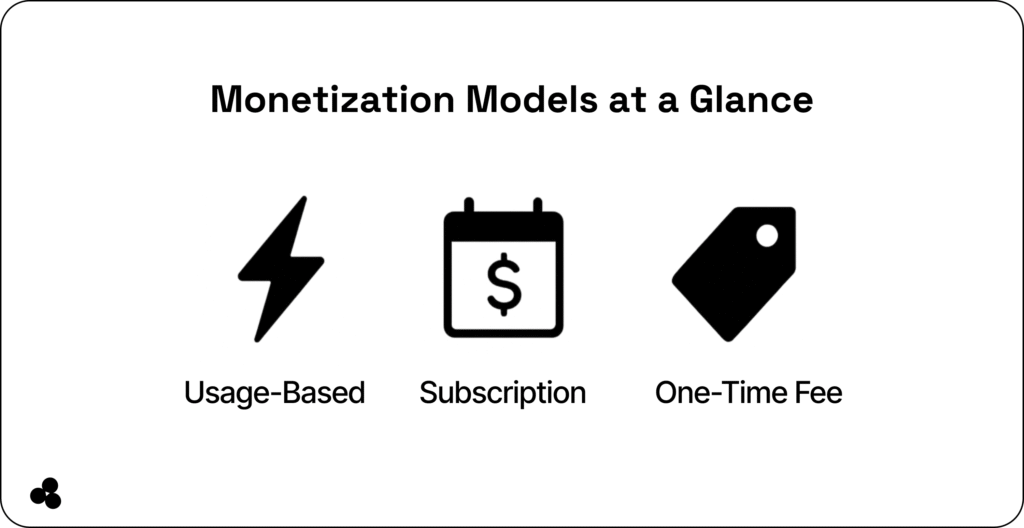
Case Studies: AI Microapps Making Real Money
Great, now if you’re not convinced that you can make money with a simple app builder, here are proven stories of developers and indie makers turning AI microapps into meaningful revenue:
- FormulaBot: $40,000 MRR using no-code + GPT-3.
- Magai: $20,000 MRR in 5 months targeting creators.
- Five Tiny AI Tools: Minimal investment, immediate revenue.
📣 Tip: Even micro-scale projects can produce meaningful income if iterated quickly. These examples prove that small AI microapps can deliver significant passive income for developers.
💬 How do I attract users to my AI app? Engage with developer communities, post on Indie Hackers, Reddit, LinkedIn, and offer free trials or demos.
Automating Your Revenue Collection
The Microapp platform automates monetization:
- Integrated billing tools (one-time, subscription, usage-based).
- Stripe integration for automated payments.
- Dashboards for user behavior and revenue tracking.
📣 Tip: Automation lets you focus on building and improving apps instead of chasing payments.
👉 Learn how to create a quiz generator app and get passive income from it.
Scaling Up: Turning a Side Project Into Steady Income
- Use Microapp insights to refine UX and features.
- Promote on Indie Hackers, Reddit, and LinkedIn.
- Bundle features or launch additional microapps.
- Automate onboarding, upsells, and email sequences.
- Iterate using feedback to maximize revenue.
Summarize Checklist:
- Choose your monetization model: token, subscription, or one-time fee.
- Implement billing and usage via the Microapp platform.
- A/B test pricing and conversion paths.
- Monitor costs and revenues—cover your base comfortably.
- Iterate: add features, upsells, or localization.
- Launch to dev and indie maker communities.
- Let the platform automate payments and tracking, freeing you to focus on building more.
Passive Income for Developers
With strategy, discipline, and the right tools, you can turn AI microapps into recurring revenue.

Build once, sell repeatedly, and let Microapp handle automation so you can focus on creating, iterating, and growing your portfolio.
Your mission: launch strategically, price smartly, and earn steadily. Start today, and turn AI ideas into passive income for developers.
